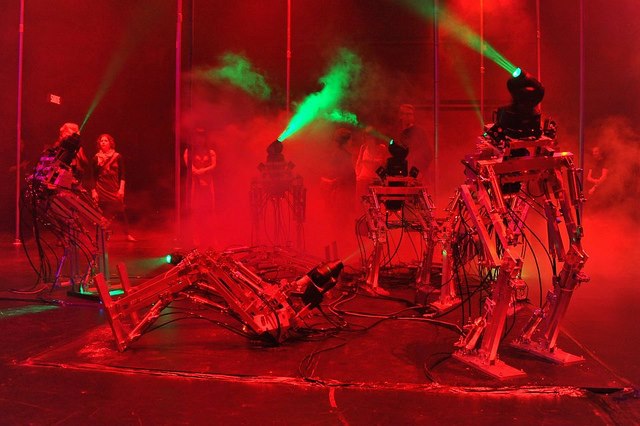DSM-VI
DSM-VI est une suite logique à notre approche artistique de création de mondes artificiels et de systèmes entièrement robotiques. Cette fois, nous voulons créer un univers qui met en scène des créatures exprimant des symptômes de comportements psychologiques «anormaux» et confrontés à de graves problèmes de «santé mentale», tels que névrose, psychose, troubles de la personnalité, paranoïa, schizophrénie, dépression, délire, etc. formes de comportement et troubles mentaux. Le titre du projet est inspiré du célèbre manuel de référence publié par l’American Psychiatric Association, le DSM-IV. Le DSM-IV (Manuel diagnostique et statistique des troubles mentaux) est considéré comme la bible de la psychiatrie moderne. Tantôt glorifié tantôt fortement critiqué, il s’agit d’un ouvrage de représentation qui décrit et classe les troubles du comportement humain et les maladies mentales. La version IV du DSM a été publiée en 1994 puis révisée en 2000. La version V est actuellement en préparation et devrait à terme être publiée en 2012. Avec ce projet, nous proposons la version VI. A l’instar de certains de nos précédents travaux conçus autour de l’idée de «la misère des machines» (voir La cour des miracles), le projet DSM-VI veut poursuivre notre travail de création sur la métaphore du vivant en interrogeant désormais la notion d’une «psychose des machines».




